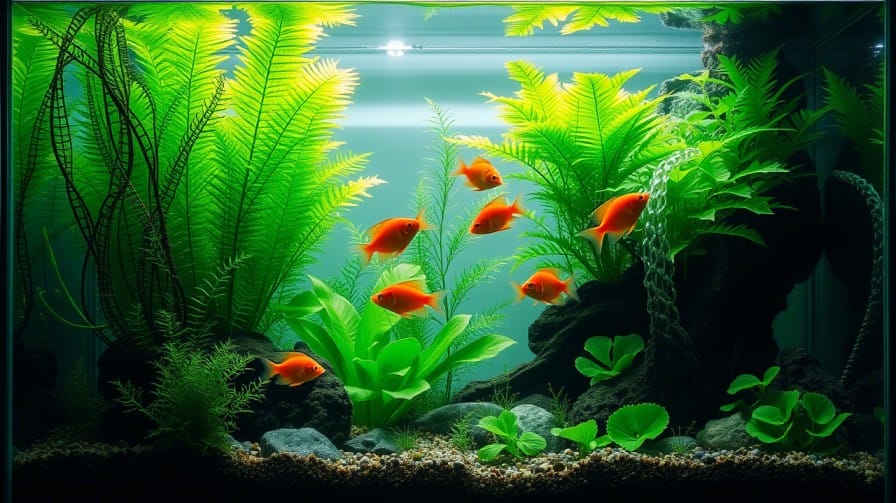
“Last spring, I glanced at my favorite betta and noticed his once-glorious fins looked ragged and pale. Panic set in-was it fin rot? Like many fish owners, I felt overwhelmed, but quick action and the right steps saved his life and restored his beauty.”
Fin rot is one of the most common yet treatable diseases affecting aquarium fish. If you’ve noticed your fish’s fins looking ragged, discolored, or deteriorating, you’re likely dealing with this bacterial infection. The good news is that with prompt treatment and proper care, most fish can fully recover from fin rot. This comprehensive guide covers everything from identifying early symptoms to effective treatments and prevention strategies to keep your aquatic pets healthy and thriving.
What is Fin Rot? Understanding the Condition
Fin rot is a bacterial infection that affects the fins and tail of aquarium fish, causing deterioration and, in severe cases, complete loss of fin tissue. This common disease describes the rotting or fraying of a fish’s fins or tail, which can progress rapidly if left untreated.
The condition is primarily caused by bacteria such as Aeromonas, Pseudomonas, and Vibrio, which enter the fish’s body through wounds or damaged fins. These opportunistic bacteria thrive in poor water conditions and attack fish with weakened immune systems, making fin rot both an environmental and infectious disease.
Types of Fin Rot: Bacterial vs. Fungal
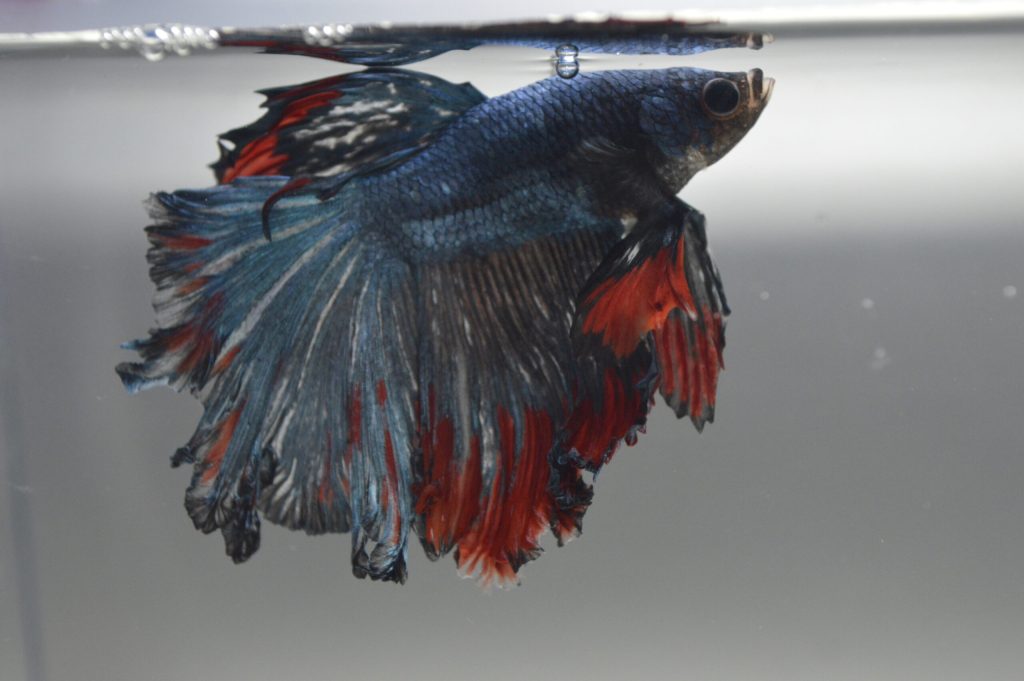
There are two primary types of fin rot that aquarists should be aware of:
Bacterial Fin Rot: The most common form, caused by gram-negative bacteria like Aeromonas, Pseudomonas, or Vibrio. It typically presents with frayed fins and discoloration at the edges.
Fungal Fin Rot: Often occurs as a secondary infection after bacterial fin rot has already begun. It appears as a cotton-like growth on the damaged fins and requires additional antifungal treatment.
In many cases, what begins as bacterial fin rot can develop a secondary fungal infection if not treated promptly, complicating the treatment process and prolonging recovery time.
Causes and Risk Factors of Fin Rot
Understanding what causes fin rot is crucial for both treatment and prevention. The disease rarely appears without underlying issues in your aquarium environment. The primary culprits include:
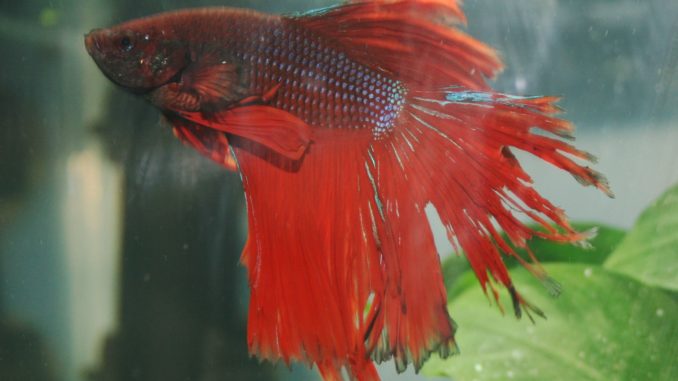
Poor Water Quality
The number one cause of fin rot across all aquarium species is poor water quality. High levels of:
- Ammonia
- Nitrites
- Nitrates
- Chlorine
These toxins stress fish and create the perfect environment for harmful bacteria to thrive. Even a temporary spike in these compounds can trigger an outbreak.
Physical Injuries and Stress
Fish with damaged fins are highly susceptible to bacterial infections. Common sources of fin damage include:
- Fin nipping from aggressive tank mates
- Sharp decorations or rough surfaces in the tank
- Improper handling during transfer
- Overcrowded living conditions causing territorial disputes
Stressed fish have compromised immune systems, making them vulnele to diseases like fin rot. Stressors include temperature fluctuations, loud noises, and bright lights.
Nutritional Deficiencies
Fish that are underfed or receive a nutritionally inadequate diet may develop weakened immune systems, making them more susceptible to infections like fin rot. Signs of malnutrition include:
- Emaciated appearance
- Lethargy
- Discoloration
- Reduced activity
A malnourished pleco, for instance, will show a lack of meat in the tail area after the anal fins, making it more vulnerable to infections1.
Visual Symptoms and Early Warning Signs
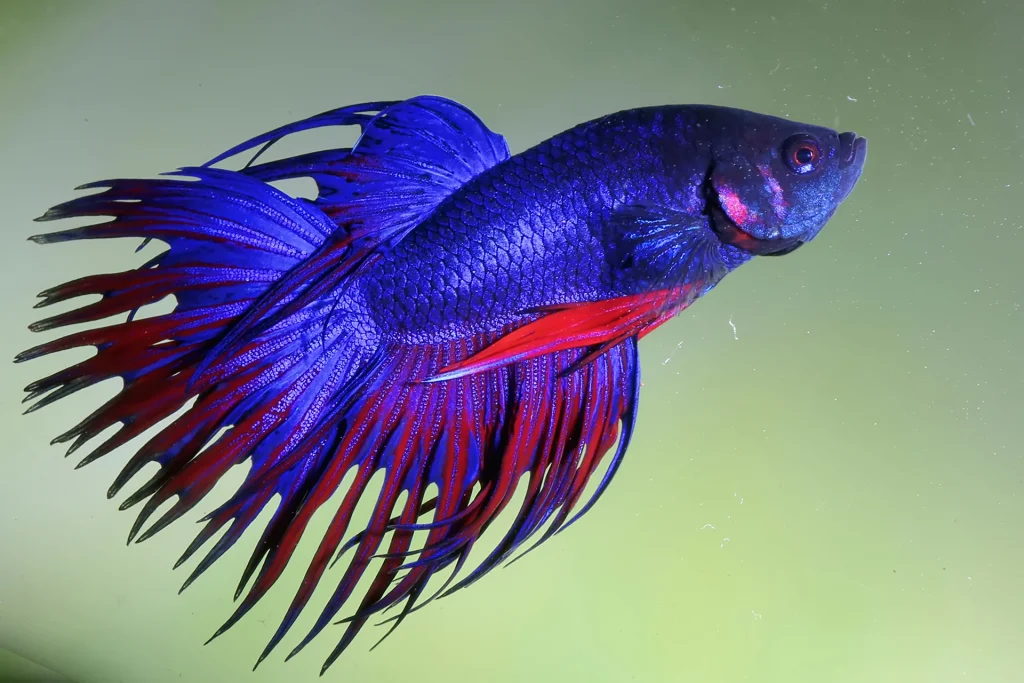
Identifying fin rot in its early stages gives your fish the best chance of full recovery. Here are the key symptoms to watch for:
Primary Symptoms of Fin Rot
- Frayed or ragged fin edges: The most noticeable early sign, where fins appear uneven or torn
- Discoloration along fin edges: White, black, or brown coloration at the margins of fins and tail
- Progressive deterioration: Fins appear shorter as the infection consumes more tissue
- Inflammation at fin base: Redness or swelling where fins connect to the body indicates advancing infection
- Missing portions of fin or tail: Parts may rot away completely or fall off
Behavioral Changes
Beyond visual symptoms, fin rot often causes behavioral changes that alert attentive aquarists:
- Decreased appetite: Affected fish may show less interest in food
- Reduced activity: Fish become lethargic and swim less actively
- Bottom dwelling: Spending more time at the tank bottom rather than swimming normally
- Isolation: Fish may separate themselves from schooling companions
Differentiating Fin Rot from Other Conditions
It’s important to distinguish fin rot from other fin conditions:
- Fin nipping: Causes clean, U-shaped bites rather than the ragged edges of fin rot
- Physical damage: Typically shows immediate tearing without the progressive deterioration or discoloration of fin rot
- Genetic traits: Some fish naturally have uneven fin edges that can be mistaken for fin rot
Stages of Fin Rot: From Mild to Severe
Fin rot progresses through distinct stages, with each requiring increasingly aggressive treatment approaches:
Stage 1: Early/Mild Fin Rot
- Slight discoloration appears at fin edges (white, red, or black depending on fish species)
- Minimal fraying may be present
- Fish behavior remains largely normal
- Highly treatable with water improvements alone
Stage 2: Moderate Fin Rot
- Noticeable deterioration of fin tissue
- Fins appear increasingly frayed and uneven
- Infected portions begin to die and fall off
- Requires medicinal intervention along with water quality improvements
Stage 3: Advanced Fin Rot
- Severe deterioration with fins receding toward the body
- Infection may reach the base of the fins
- Risk of spreading to the fish’s body tissues
- Requires aggressive antibiotic treatment
- May be life-threatening if untreated
Early intervention is critical—fin rot becomes increasingly difficult to treat as it advances, and once it reaches the body, the damage may be irreversible.
Expert Quotes or Data
- “Fin rot is one of the most common diseases in aquarium fish, but it is also one of the most preventable,” says The Spruce Pets.
- Studies show that poor water quality is the root cause in most cases, and regular water changes can reduce disease risk by up to 80%.
- Experts recommend antibiotics like erythromycin for moderate to severe cases.
Step-by-Step Treatment Plan for Fin Rot
Treating fin rot effectively requires a multi-faceted approach targeting both the infection and its underlying causes. Follow this comprehensive plan for the best chance of success:
Step 1: Test and Improve Water Quality
Before administering any medications, address the water quality issues that likely contributed to the infection:
- Test water parameters using a complete test kit that measures ammonia, nitrite, nitrate, pH, and temperature
- Perform an immediate 25-30% water change to reduce toxins
- Vacuum the substrate thoroughly to remove waste and debris
- Check filter functionality and clean if necessary (without destroying beneficial bacteria)
Aim for these ideal parameters:
- Ammonia: 0 ppm
- Nitrite: 0 ppm
- Nitrate: <40 ppm
- pH: Appropriate for your specific fish species
- Temperature: Stable within the optimal range for your fish
Step 2: Quarantine Affected Fish (When Possible)
If you have multiple fish and not all show signs of fin rot:
- Set up a hospital tank with water from the main aquarium
- Use a separate net to transfer affected fish to prevent cross-contamination
- Maintain stable temperature and gentle filtration in the quarantine tank
- Continue water testing and maintenance in both tanks
Step 3: Choose and Administer Treatment
Treatment options vary based on the severity of infection and fish species:
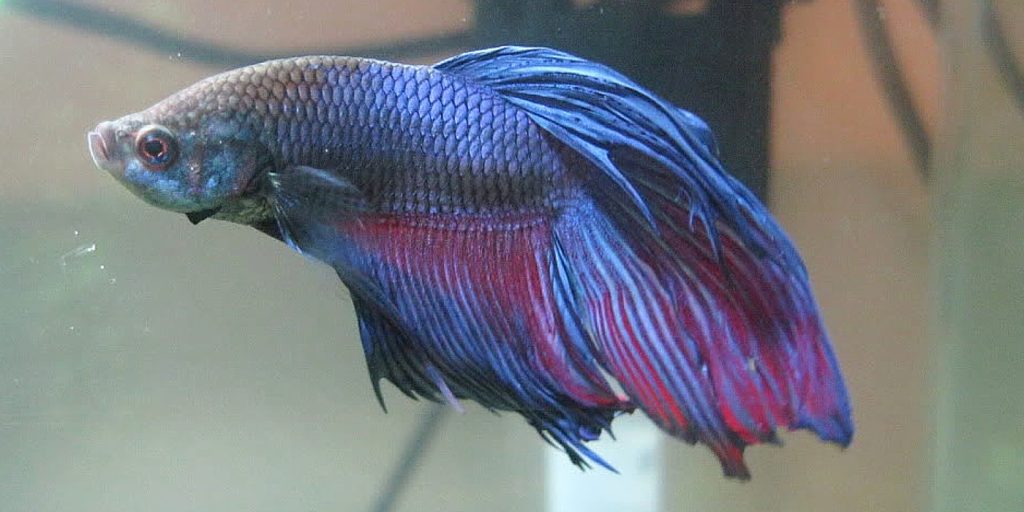
For Mild Cases:
- Aquarium Salt Treatment: Dissolve 1 teaspoon of aquarium salt (not table salt) per gallon of water
- Clean, Warm Water: Maintain pristine water conditions with slightly elevated temperature (within safe range for your species)
- Natural Remedies: Add Indian almond leaves (Ketapang leaves) to release beneficial tannins with antibacterial properties
For Moderate to Severe Cases:
- Antibacterial Medications: Use commercial products like:
- API Fin & Body Cure (contains Doxycycline)
- Seachem KanaPlex (contains Kanamycin)
- Maracyn or Maracyn
- Interpet Anti Fungus and Fin Rot Treatment
- Combined Approach: For advanced cases, you may need:
- Remove carbon filtration during treatment (it removes medications)
- Follow medication dosing instructions precisely
- Continue water changes as directed by medication instructions
Step 4: Monitor Recovery
- Observe your fish daily for signs of improvement or deterioration
- Look for clear, transparent tissue at fin edges—a sign of new growth and healing
- Continue treatment for the full recommended duration, even if symptoms improve
- Maintain excellent water quality throughout recovery period
Step 5: Post-Treatment Care
- Perform a partial water change after completing medication course
- Gradually return water parameters to normal if you altered them during treatment
- Reintroduce carbon filtration if removed during medication
- Continue monitoring for any signs of recurrence
Prevention Strategies: Keeping Fin Rot at Bay
Preventing fin rot is far easier than treating it. Implement these strategies to maintain a healthy aquarium environment that naturally discourages bacterial infections:
Regular Maintenance Routine
- Scheduled Water Changes: Perform weekly 20-25% water changes to maintain water quality
- Substrate Vacuuming: Remove waste and uneaten food from the substrate during water changes
- Filter Maintenance: Clean filter media in old tank water (never tap water) to preserve beneficial bacteria
- Equipment Checks: Regularly inspect heaters, filters, and air pumps for proper function
Proper Stocking and Compatibility
- Avoid Overcrowding: Follow the inch-per-gallon rule as a minimum guideline for fish stocking
- Research Compatibility: Some fish are notorious fin nippers—research before mixing species
- Provide Adequate Space: Ensure territorial fish have sufficient space to establish territories
- Consider Fish Personality: Individual fish may be more aggressive than typical for their species
Optimal Nutrition
- Varied Diet: Provide a mix of high-quality foods appropriate for your fish species
- Feeding Schedule: Feed small amounts 1-2 times daily that can be consumed within 2-3 minutes
- Nutritional Supplements: Consider supplements like vitamin-enhanced foods for stressed or recovering fish
- Remove Uneaten Food: Promptly remove any food not consumed within a few minutes
Stress Reduction
- Stable Parameters: Maintain consistent temperature, pH, and other water parameters
- Appropriate Lighting: Provide lighting periods that mimic natural day/night cycles
- Hiding Places: Include plants, caves, and other structures where fish can retreat
- Gentle Flow: Ensure water current is appropriate for your fish species (some, like bettas, prefer gentle flow)
Quarantine Protocol
- New Arrivals: Quarantine all new fish for 2-4 weeks before adding to main tank
- Treatment Items: Keep a separate net, siphon, and buckets for quarantine tanks
- Observation Period: Watch for any signs of disease during quarantine
- Prophylactic Treatment: Consider preventative treatments for new fish if appropriate for species
FAQ: Common Questions About Fin Rot
Q: Can fin rot kill fish?
A: Yes, if left untreated, fin rot can progress until it reaches the body of the fish, causing systemic infection that can be fatal. Early intervention is crucial for successful treatment.
Q: How long does it take for fish to recover from fin rot?
A: With proper treatment, you should see improvement within a week. Complete fin regeneration typically takes several weeks to months, depending on the severity of damage. Clear, transparent growth at fin edges is the first sign of recovery.
Q: Is fin rot contagious to other fish?
A: The bacteria that cause fin rot are always present in aquarium water but primarily affect fish with compromised immune systems or damaged fins. However, the conditions that lead to fin rot in one fish (poor water quality, stress) can affect all tank inhabitants, making multiple cases common.
Q: Can fin rot come back after treatment?
A: Yes, if the underlying causes (poor water quality, stress, etc.) aren’t addressed, fin rot can recur. Maintaining excellent water conditions and reducing stressors are essential for preventing recurrence.
Q: Can I use salt to treat fin rot in all fish species?
A: No. While aquarium salt is effective for many fish, certain species (like scaleless fish, some catfish, and certain plants) are sensitive to salt. Research your specific species before using salt treatments.
Q: What’s the difference between fin rot and fin nipping?
A: Fin nipping causes clean, U-shaped bites in fins from other fish, while fin rot shows progressive deterioration with discoloration and ragged edges. However, fin nipping injuries can develop into fin rot if water quality is poor.
Q: Is Melafix effective for treating fin rot?
A: Opinions on tea-tree-based remedies like Melafix are mixed. While some aquarists report success with mild cases, others argue these products have limited effectiveness for bacterial infections. For moderate to severe fin rot, antibiotics are generally more effective.
Recommended Products for Treating and Preventing Fin Rot
Water Testing and Maintenance
- API Master Test Kit: Comprehensive testing for ammonia, nitrite, nitrate, and pH
- Gravel Vacuum: Essential for removing waste from substrate during water changes
- Water Conditioner: Neutralizes chlorine and chloramine in tap water
Medications and Treatments
- Seachem KanaPlex: Effective broad-spectrum antibiotic for moderate to severe cases
- API Fin & Body Cure: Contains doxycycline, effective against bacterial fin rot
- Interpet Anti Fungus & Fin Rot Treatment: Treats both bacterial and fungal infections
- Aquarium Salt: Non-iodized salt specifically for aquarium use
- Indian Almond Leaves: Natural source of tannins with antibacterial properties
Preventative Equipment
- Sponge Filter: Gentle filtration that won’t damage delicate fins
- Adjustable Heater: Maintains stable water temperature
- Silk or Live Plants: Safe alternatives to plastic plants that can tear fins
- Quarantine Tank Kit: Essential for isolating new or sick fish
Conclusion: A Holistic Approach to Fish Health
Fin rot, while common and concerning, is highly treatable when caught early and addressed comprehensively. By maintaining excellent water quality, providing appropriate nutrition, and reducing stress factors, you can prevent most cases of fin rot before they begin.
Remember that fin rot is often a symptom of broader aquarium management issues rather than just a disease to treat. Each case offers an opportunity to improve your fish-keeping practices and create a healthier environment for your aquatic pets.
If you’ve successfully treated fin rot, take the experience as a valuable lesson in preventative care. Implement a regular maintenance schedule, invest in quality testing equipment, and observe your fish daily during feeding to catch any health issues at their earliest stages.
With the knowledge and tools provided in this guide, you’re well-equipped to both treat current cases of fin rot and prevent future occurrences, ensuring your fish live long, healthy lives in your care.

